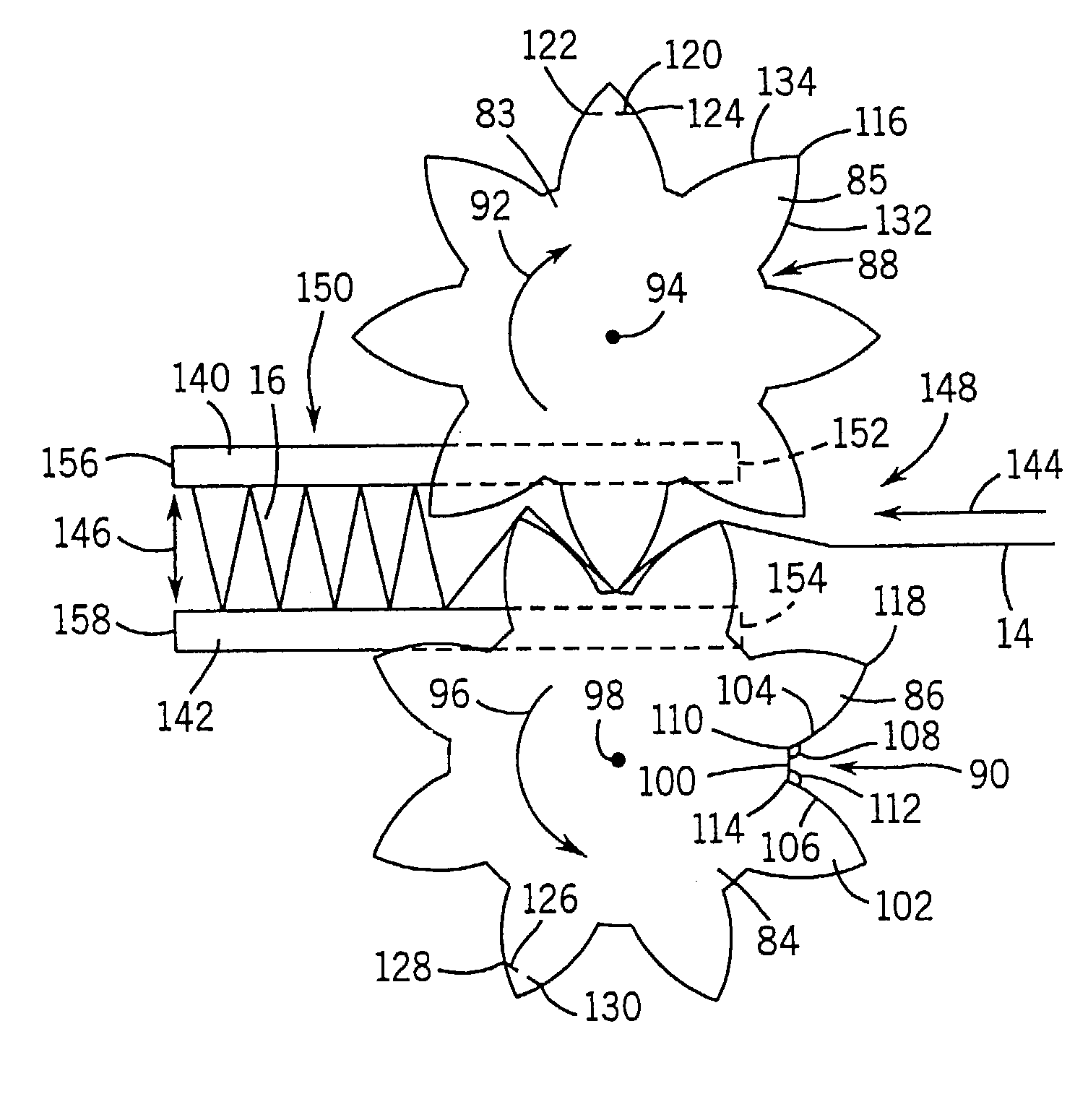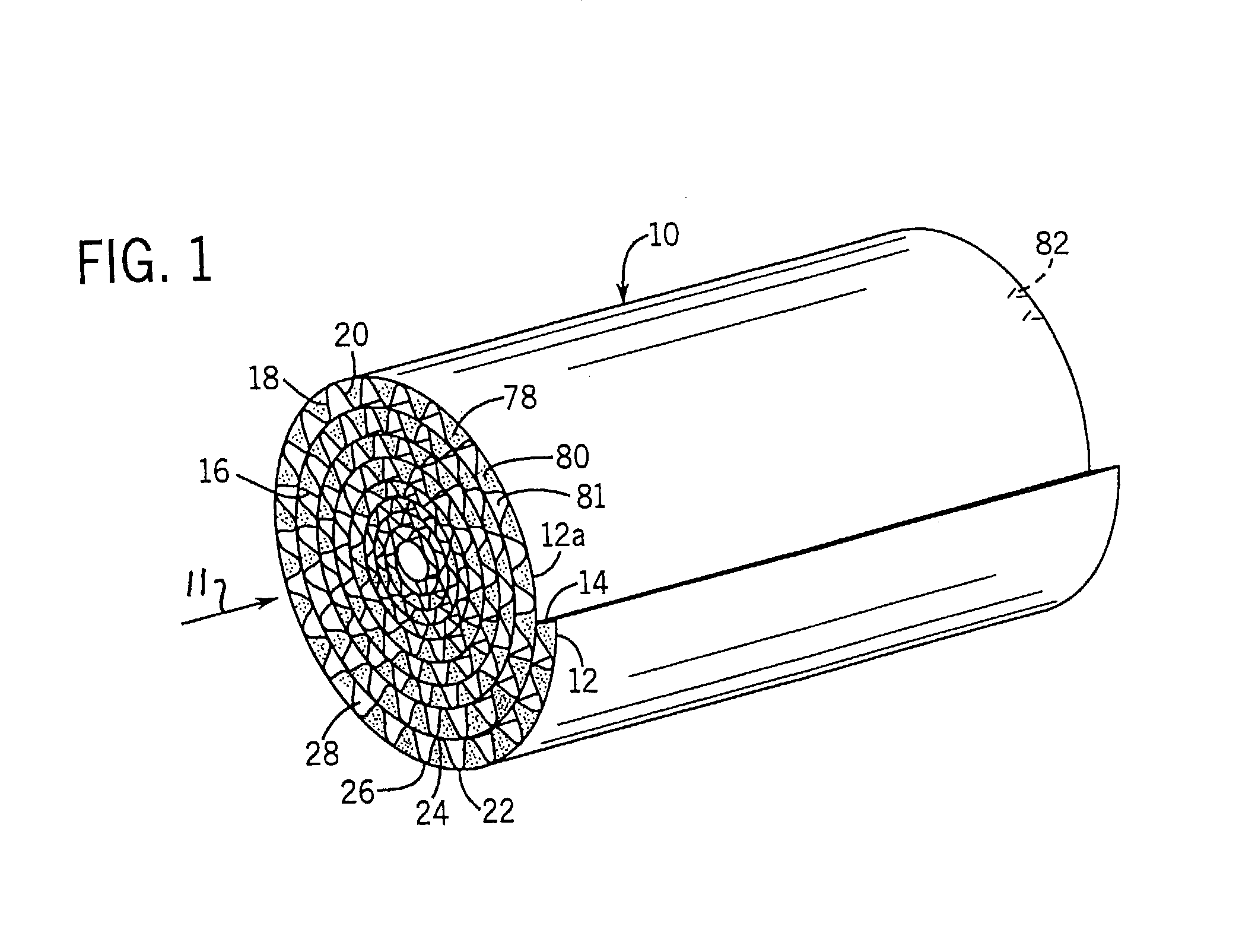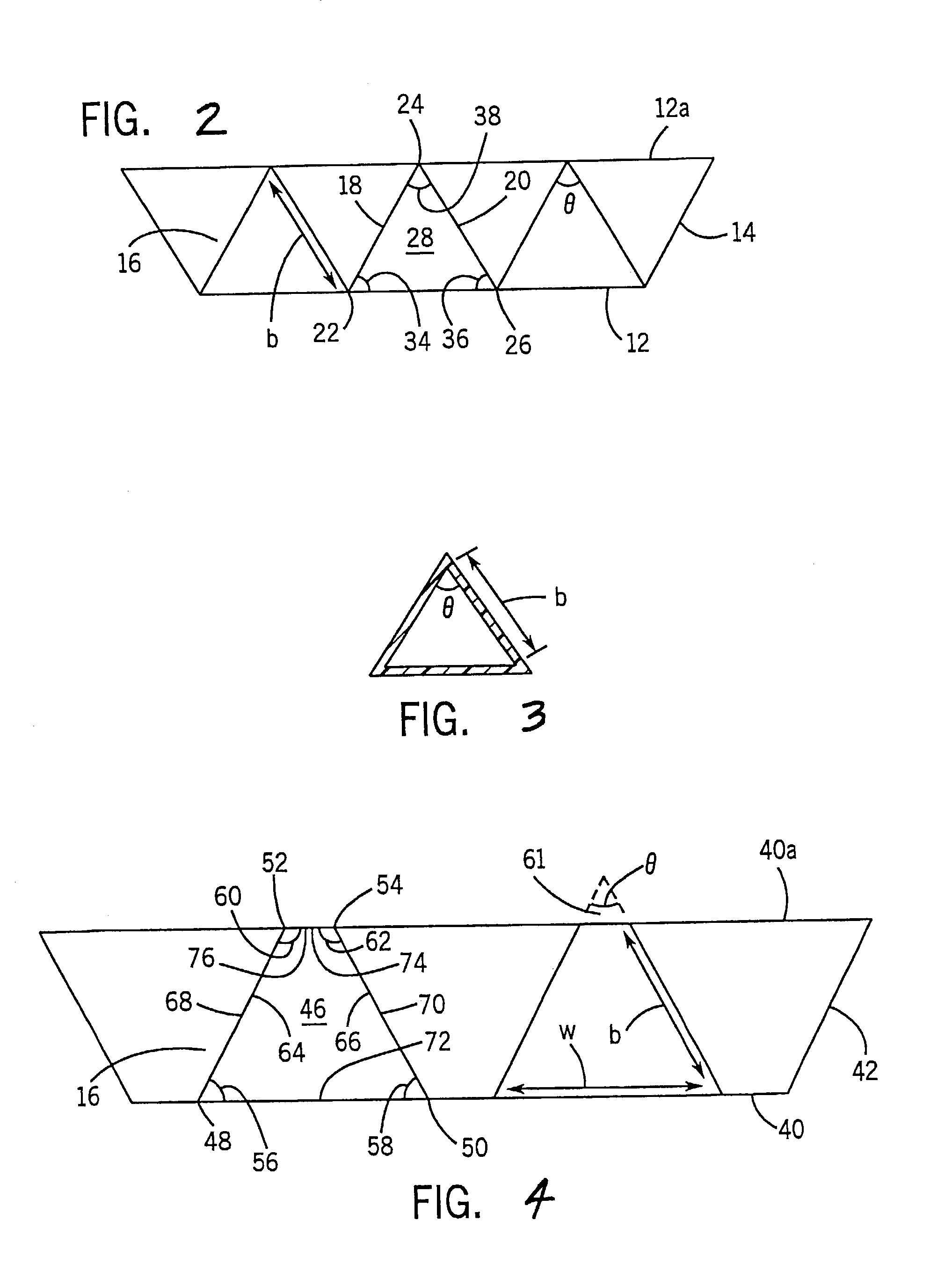Filter and forming system
a filter and forming system technology, applied in the field of filtering fluid, can solve the problems of not being able to produce media with the desired geometry and structure, media to fold or crease into pleats along the score lines, and achieve the effect of more structural stability, less laminar flow, and not adversely affecting the performance of the filter
- Summary
- Abstract
- Description
- Claims
- Application Information
AI Technical Summary
Benefits of technology
Problems solved by technology
Method used
Image
Examples
Embodiment Construction
[0014]FIG. 1 shows a filter 10 for filtering fluid flowing axially thereinto as shown at arrow 11. The filter includes first and second filter media sheets 12 and 14. Sheet 14 has a plurality of pleats such as 16 defined by wall segments 18, 20, etc. extending in zig-zag manner between pleat tips 22, 24, 26, etc., FIGS. 1, 2, at axially extending bend lines. The pleat tips such as 22 and 26 on one side of sheet 14 are in contiguous relation with sheet 12 and preferably bonded thereto with an adhesive or other binder, and define axial flow channels such as 28. Sheets 12 and 14 are preferably, though not necessarily, wound or rolled into a spiral, FIG. 1. In a spiral-wound or other multilayer stack, the pleat tips such as 24 on the other side of sheet 14 engage sheet 12 of the next layer, for example as shown at 12a, FIG. 2.
[0015]The noted flow channels such as 28 have a lateral cross-sectional shape having two adjacent included angles each greater than 45° and less than 75°. In one e...
PUM
| Property | Measurement | Unit |
|---|---|---|
| included angles | aaaaa | aaaaa |
| included angles | aaaaa | aaaaa |
| height | aaaaa | aaaaa |
Abstract
Description
Claims
Application Information
 Login to View More
Login to View More - R&D
- Intellectual Property
- Life Sciences
- Materials
- Tech Scout
- Unparalleled Data Quality
- Higher Quality Content
- 60% Fewer Hallucinations
Browse by: Latest US Patents, China's latest patents, Technical Efficacy Thesaurus, Application Domain, Technology Topic, Popular Technical Reports.
© 2025 PatSnap. All rights reserved.Legal|Privacy policy|Modern Slavery Act Transparency Statement|Sitemap|About US| Contact US: help@patsnap.com



